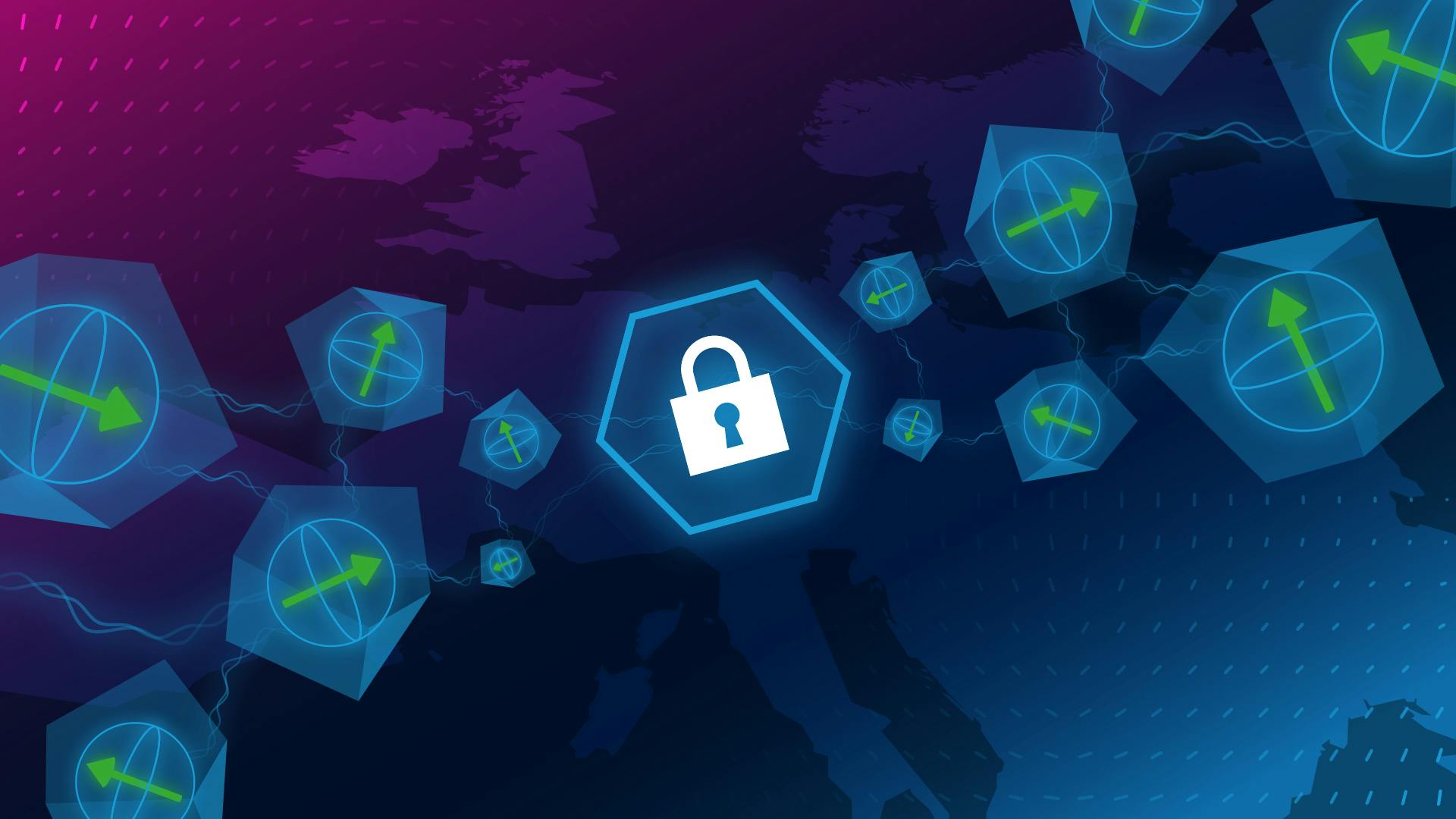Secure Communications
Keeping your data safe
Secure communication
A quantum internet uses quantum bits (qubits). These offer a key advantage: they cannot be measured (read, copied, or intercepted) without being altered. Any attempt to read or intercept information encoded by the qubits is detectable.
The quantum internet relies on this inherent cryptography and protection, to exchange encryption keys safely, via a technique known as quantum key distribution (QKD). This uses quantum mechanics to distribute a key between two users on the quantum network, which they can then use to encrypt and decrypt their sensitive messages. Although both encryption and decryption use conventional crypto algorithms, the key itself is created using the laws of quantum mechanics, so it cannot be intercepted. The result is encryption that is resistant to cyber-attacks.
There are many QKD methods, and the two most important ones are described below.
QKD - preparation and measure
The first method, referred to as prepare and measure, relies on a quantum mechanical feature - namely that measuring a qubit (information) changes its state.
Keys are exchanged as follows:
- A prepares a qubit in a certain state and sends it to B,
- B measures the qubit to determine its prepared state.
- If an eavesdropper measures the qubit in transit from A to B, this compromises the key, changing the state of the qubit, which A and B can detect.
- Compromised keys are thrown out, and only keys exchanged securely are kept.
QKD is already in use with the prepare and measure method. In Switzerland, for instance, it is being used to secure the networks where election votes are counted and stored.
QKD - measurement-device independent
The second important QKD method is referred to as measurement-device independent (MDI). It relies on another quantum mechanical feature known as entanglement. MDI-QKD is considered among the upcoming generation of secure quantum communication.
- A and B each prepare a qubit, as in prepare-and-measure QKD.
- Each sends their qubit over a quantum network to a central node that entangles them.
- The key is created thanks to the entanglement established.
A great advantage of MDI-QKD is its scalability since it operates over a central node. By contrast, prepare-and-measure QKD can connect only two users at a time. MDI-QKD’s central node can connect many users at once, and each user can create a key with any other user. Data moving between any two users is neither available nor known to the central node, which makes attacks to the central node futile.
All QKD methods can expose eavesdropping attempts thanks to the quantum nature of qubits. In MDI-QKD, eavesdropping affects the entanglement and allows A and B to detect if the key is compromised and the connection insecure. MDI-QKD also ensures safe key exchange when measurement devices used to measure the entanglement are tampered with - hence the name ‘measurement-device independent’.
A secure quantum internet
A quantum internet promises to offer secure key distribution for secure communications and data transfers, using the laws of quantum mechanics. It is this level of cyber security that makes future communications over quantum networks so appealing.

